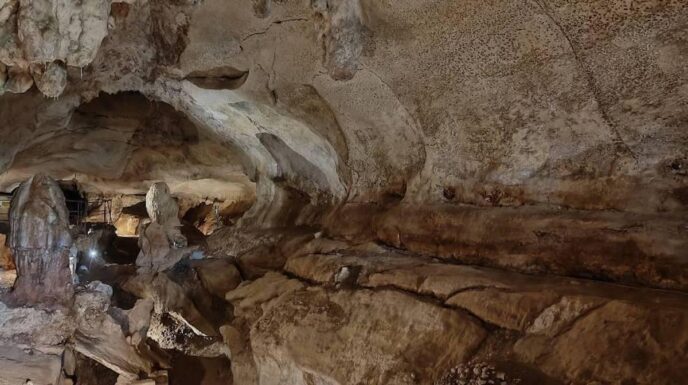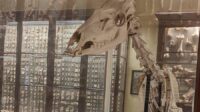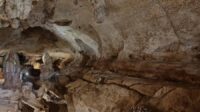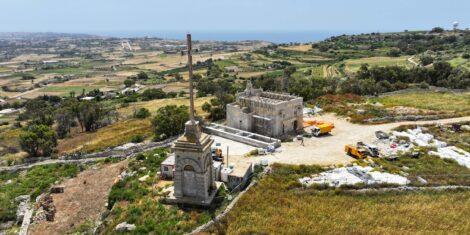Literally translated to ‘Cave of Darkness’ Għar Dalam is located in the rock formation of Lower Coral Limestone. It goes back to the Tertiary age, which lasted from 66 million to 2.6 million years ago.

How Did It Come to Be?
The rock the Maltese islands are made of was accumulated in the sea bed which covered a far bigger area than the mediterranean does today. During the Pliocine era (a period of global cooling) this same sea was drained away; causing the Maltese islands to be exposed on the sea’s surface.
Geologists have concluded that at this point the islands were essentially one piece of land with Sicliy and Southern Italy. This continued for a long time till another epoch came and the sea level rose once again. This made Malta and Gozo as we know them today; islands.
In the period following this time frame, the Mediterranean had a wetter climate. The constant rising of the Wied Dalam river led to the formation of the cave. Water kept seeping into the subsoil through cracks in the rocks. This eventually led to a formation of a hole through natural decay or weathering.
Brief History
The earliest existing record of the caves was in writing by a Maltese historian called Giovanni Francesco Abela in 1647. In 1865 it became known as a site of fossil remains. Italian geologist and prehistorian Arturo Issel conducted exploration in search of human remains. Instead, he found the first bones of hippos.
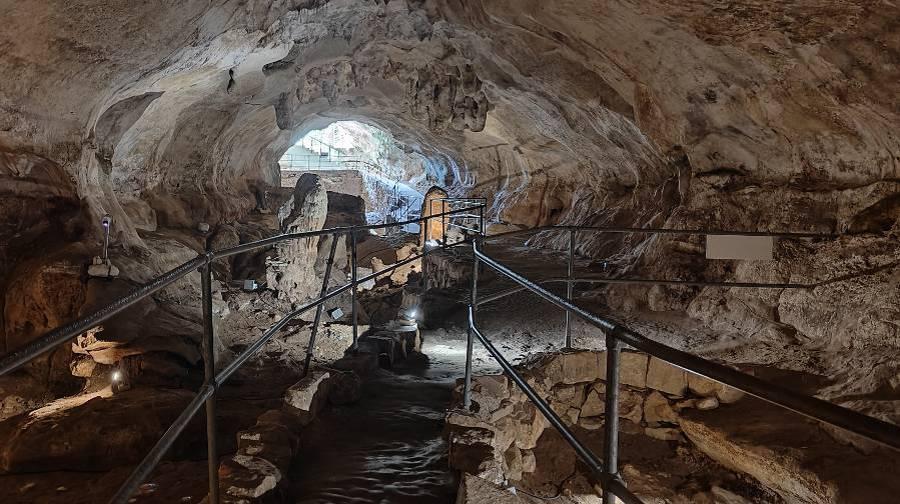
The Treasures of Għar Dalam
An interesting fact about this cave is that when Malta was literally connected to Europe, it became home to several animals which did not originally belong to the region; such as hippopotami and elephants. In other words these animals are definitely not indigenous to the Maltese islands, but their remains were found in the caves.
This was also seen on other Mediterranean islands which underwent the same natural process. Paleontologists also made a striking remark about survival of the fittest in Malta. Since these animals are not indigenous to the islands, the flora available was not enough. Because of this, it is thought that only the smallest specimens survived. Consequently, the remains in the caves are noticably smaller than normal.
Apart from these animal bones, there were also traces of human settlement such as pottery shards and other tools. These imply that humans were present in Malta around the dates of 5,200 to 4,500 BC. These are the oldest human remains on the island.
Many of these objects can be found in the beautiful time-machine that is the Joseph Baldacchino Hall; the museum next to the cave.
Għar Dalam in Wartime
This same Neolithic shelter doubled as an air-raid shelter during the second world war.
The story goes that after the first bombings a group of individuals from various villages nearby scurried off to the cave and threatened the watchman to let them in. A census was taken to see how many people were there some time in July in 1940. It was recorded there were almost 200 people living in the caves.
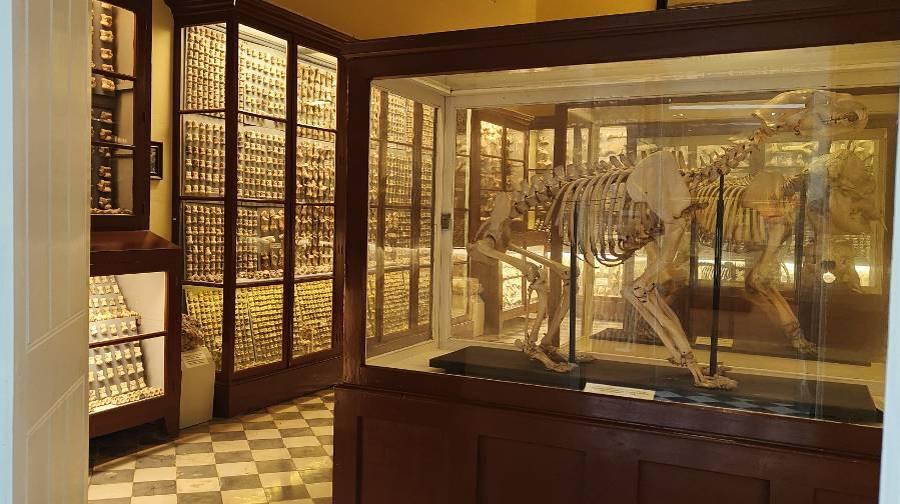
Myths of Għar Dalam
The Cyclops
Unsurprisingly, there is also mythology involved in the caves. In 1914 a paleontologist by the name of Othenio Abel put forward the idea that the smaller elephant heads were discovered by the Greeks. This could have been the inspiration for the Cyclops legend. The skull of these elephants might have been misinterpreted by these explorers and the central cavity for the trunk could have been thought to be an eye-socket.
Unidentified Engraved Crosses
There are also unidentified crosses etched into the insides of the right-hand side of the cave (from the entrance). Some claim that they are from the time of the war but there are photos that prove that they had already been there in the 1930’s. Unidentified, human-like structures or engravings are a common theme in Maltese landmarks.
